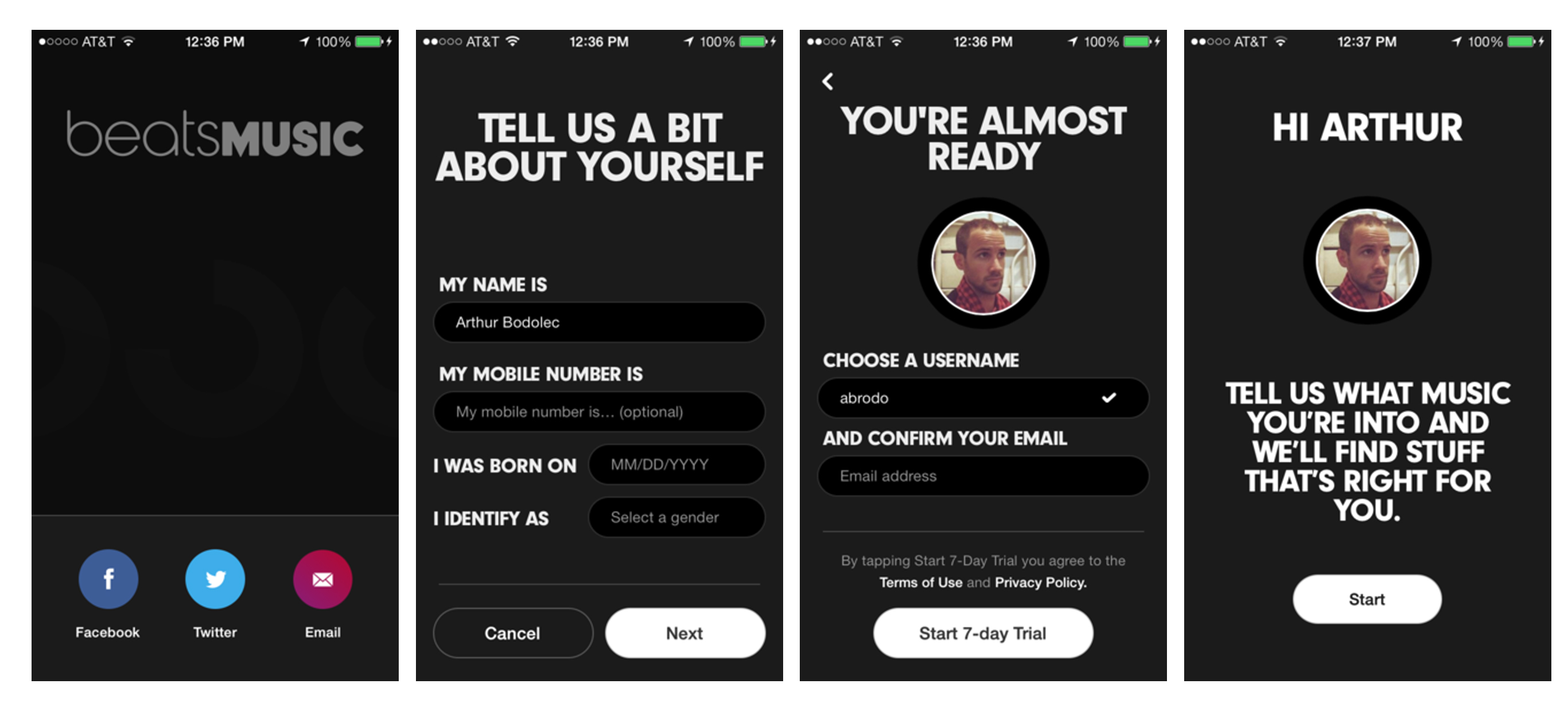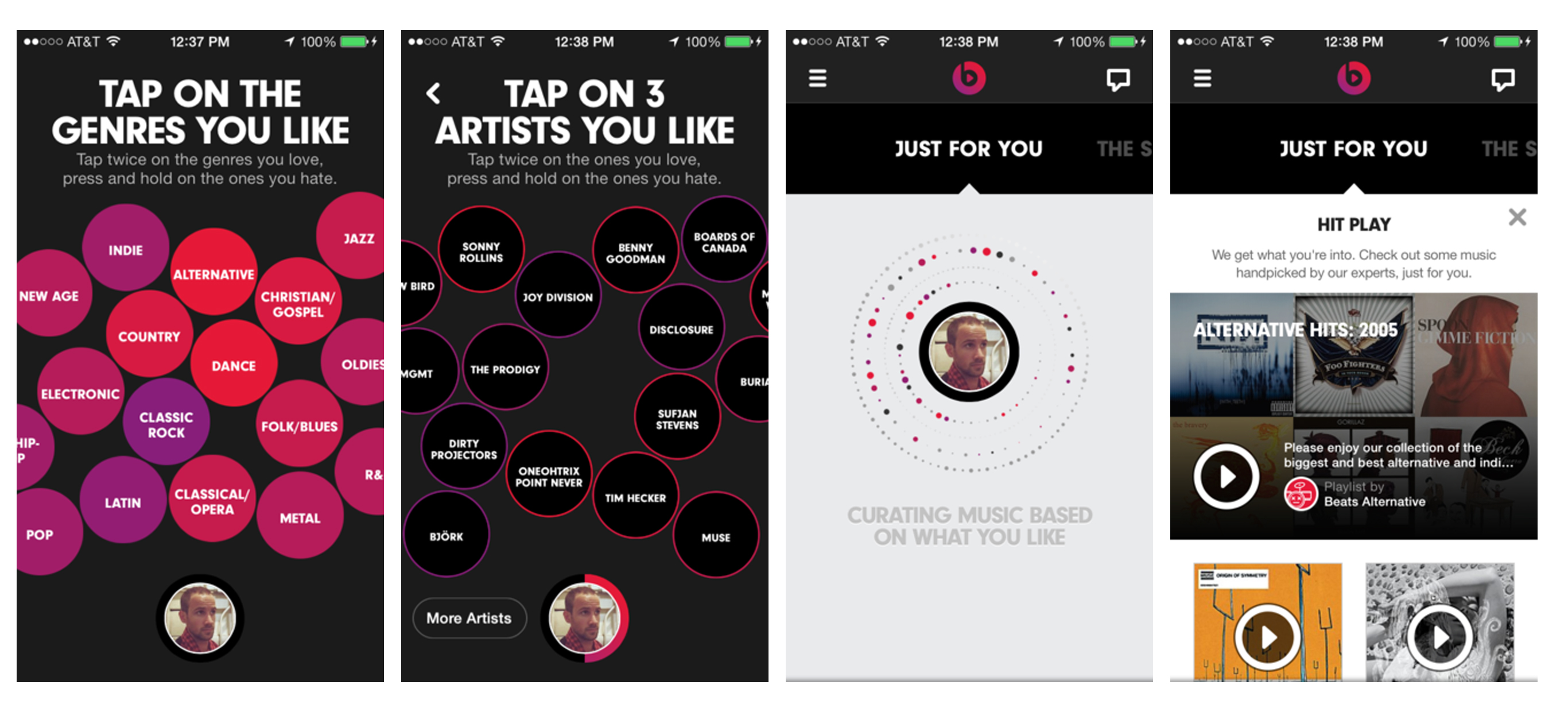Article
The importance of “onboarding”

This is the second part in a series about personalized experiences. In the first article, I gave a brief introduction to the topic. This time, I’ll explain more about how to “onboard” users in an online environment and why it matters to your organization.
What is “onboarding” exactly? Onboarding refers to the process that users go through when they first enter a new online service. Think of an app or website— the onboarding process introduces users to the website or application and makes them feel comfortable. This is also where you can gain a good understanding of a user’s needs and desires, and use these insights to provide personalized interfaces. When the onboarding process is used successfully, the user will become more loyal to your service; offering help during their introduction to the website or application will also help them to better understand other steps during their journey.
Brand experience
Create an onboarding experience that fits your brand promise. Users have an expectation of your brand that you should fulfill: what you ask, how you ask it, how you visualize it, and how it works all add up to a first initial brand experience.
Three examples of onboarding:
The movie “Her”
In my previous post I used the movie “Her” by Spike Jonze as an example of good onboarding practice.
[Check it out here](https://www.youtube.com/watch?v=WzV6mXIOVl4 movie "https://www.youtube.com/watch?v=WzV6mXIOVl4 movie")

The onboarding in this example is executed in a really nice way. Who doesn’t like the voice of Scarlet Johansson? The questions are asked in a low effort way using speech recognition, like a real interview between two people. Although I’m confident that speech recognition and artificial intelligence are in the near future, it isn’t a working solution just yet. Not to mention that an onboarding experience like this doesn’t fit every brand.
Getting back to the questions in “Her”, the computer asks things like: “How would you describe your relationship with your mother?” and “Would you consider yourself to be a social person?” These are irrelevant questions for most services or apps. To successfully onboard users it’s important to only ask relevant questions. This also means not asking questions you already know the answer to; you should ask for the missing information. This information will enable you to put users in certain profiles, and is important because you can design scenarios for these profiles that lead to a richer user experience.
In the next example I’ll explain more about the different steps within the onboarding process.
Beats by Dr. Dre music service
Beats by Dr. Dre is a new streaming service that focuses on personalized music experiences. The service provides a great example of onboarding in the digital realm. In the Beats streaming service app, the onboarding process consists of two steps:
- Gain personal information: the “Beats experience” starts with creating a profile. Here they ask for the user’s name, mobile number, birthday and gender. This information already provides a clue about who the user is.
- Learn about the user’s music preferences: in this step, Beats taps into the user’s needs in terms of music preferences, asking things like “what kind of music do you like?” And you can select all kinds of different genres.
So, what does Beats do with this information? It enables them to tailor the music content to each individual user. With information about the user’s gender and date of birth they can offer certain music: it’s more likely that a 12 year old would like Justin Bieber than somebody in their thirties or forties. Beats can also offer hints that relate to their music taste.
These user insights empower Beats to provide users with content that is relevant, leading to longer usage sessions as well as returning users. If you personalize the user experience, users will perceive it as more meaningful and use it more often.


For Beats by Dr. Dre it’s easy to get information about the user’s needs, but what if you deal with a service that’s more confidential in nature? Think about services like banks, insurance and health services.
Onboarding in finance
A bank gains only limited insight into your specific needs by analyzing your spending behavior. They can see where you bought your products and whether it was online or offline, but this isn’t enough information to create a good personalized experience. How can you gain a better understanding of these users? It would be weird to just ask “how much did you spend last month?” for example. At Edenspiekermann, we were challenged with this problem by one of our clients.
After conducting user research we found out that it’s important to ask questions in the right way and at the right time. The questions should be at a higher level of abstraction. For example: “How often do you go shopping?” “When you’re shopping, how often do you buy something for your friends?” In short, ask questions in a recognizable story format. Through these questions you can get information about the users’ spending habits, their attitude towards money, financial risk, and how the users want to be supported in their financial situation.
As soon as you get an understanding of how a user sees their own financial situation, and how he or she wants to be supported, you can tailor the way you communicate. Basically, categorize people as certain user types. Within an interface you can change how to show different information to different kinds of users, improving the digital service and therefore the relationship between bank and customer.
Onboarding and gamification
To create a successful onboarding system, you can use certain gamification methods. Addings tools that enable users to compare them to other users via progress bars, for example. By offering hints like “You’re 90% on your way to having a rockstar profile.” or “Your friends have a profile rating of 8, yours is currently 6.” Through methods like these, you can encourage people to do more with their profiles. A great example of how to target your users and foster loyalty is seen with Linkedin, and how it encourages users to build up their profiles.
Recap
A good onboarding process enables users to easily understand a website or app. At the same time, it gives companies information about the users that they can use to provide them with personalized interfaces. Asking meaningful questions is key to making this a success. Also, not all services benefit from the same type of onboarding experience. Services with more private content should ask more storified questions. With music or news apps you can ask more direct questions because these opinions and tastes have a less confidential nature.
The third blog in the personalized experiences series is coming soon!